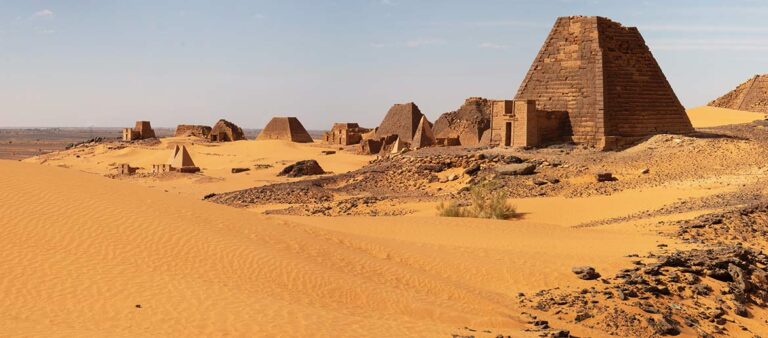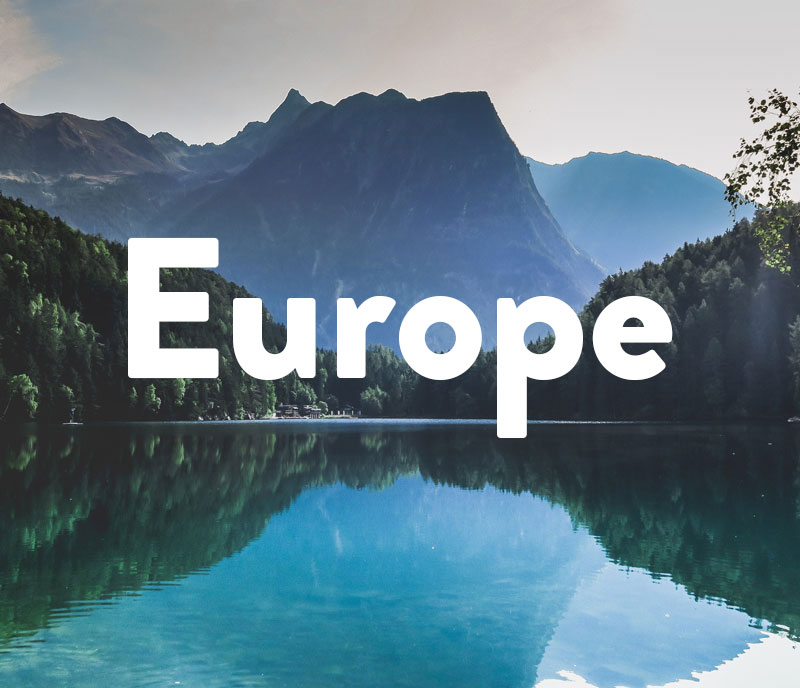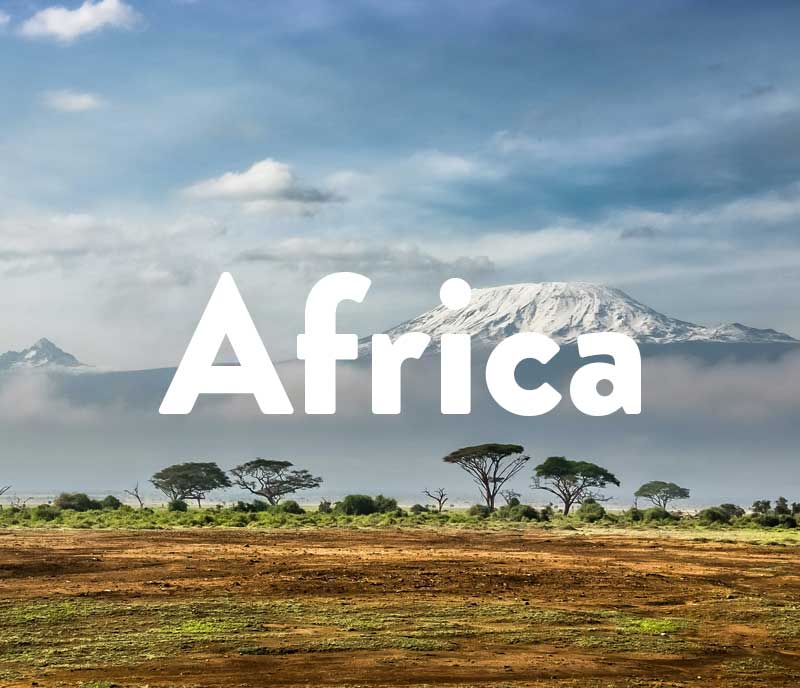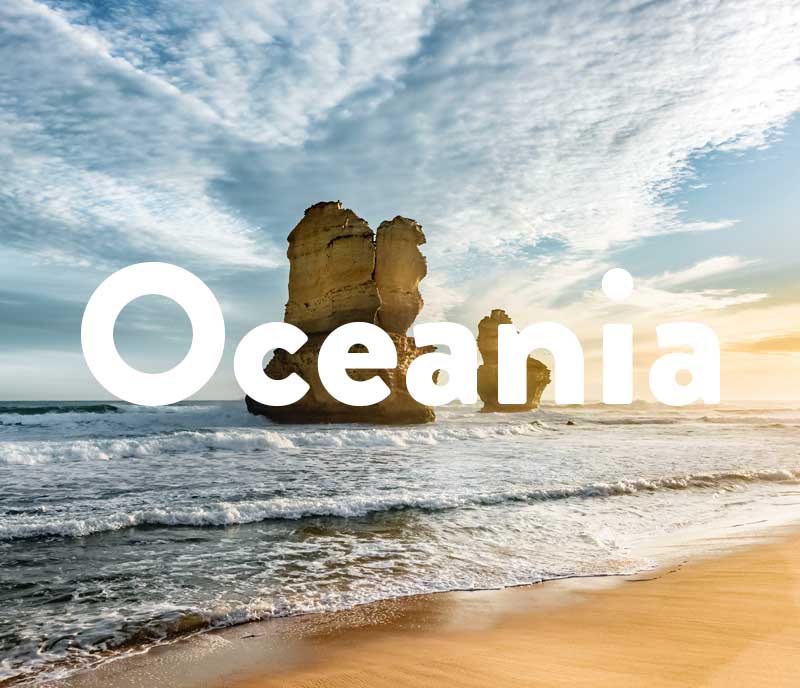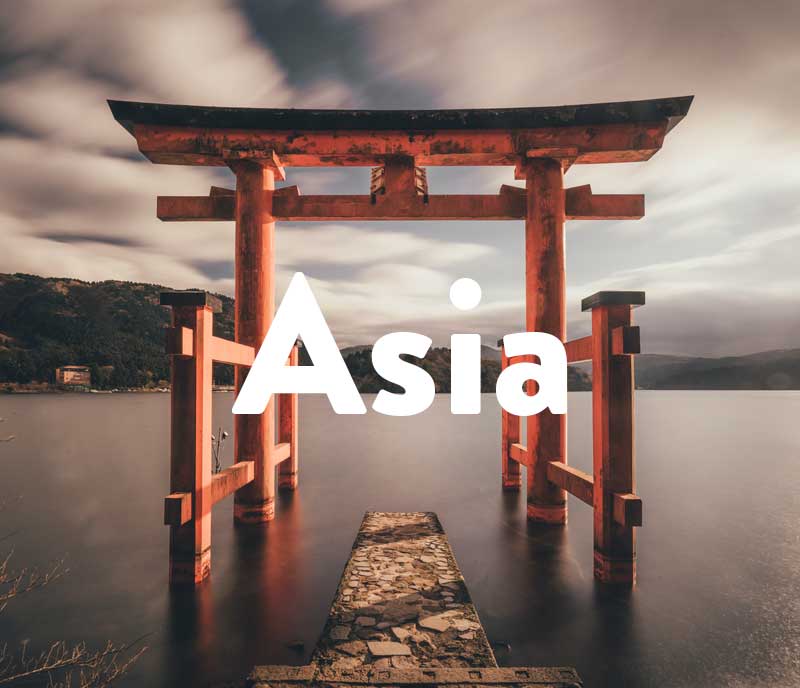Sudan is a destination as mysterious as it is adventurous. Travelers who choose to vacation in this desertous country are people who want to walk the path less trodden. In addition to numerous impressive desert ruins, oases and ancient cult sites, there is also a large coastal region with some popular diving spots.
Table of Contents
- The Key Info
- The Country in Numbers
- The Five Largest Cities
- Top Tourist Attractions
- When To Travel
- Safety for Travelers
- Important Holidays
- Visa
- Currency
- Packing List
- Dos and Don’ts
- Secret Blogger Tips
- Top Instagrammable Places
- Fun Facts
Dive into our (free) travel guides below!
.
.
.
.
.
.
.
.
The Key Info
Many people have only really heard of Sudan in passing. The east African country, which has been independent since January 1st, 1956, is a huge nation. With an area of 1.8 million square kilometers, Sudan is a good three times larger than, for example, Germany. However, most of the country’s area is taken up by sparsely populated desert areas. Nevertheless, more than 40 million people live here. The capital, Khartoum, is located in the center of the country, and is a thriving metropolis in Africa, with more than 2.6 million inhabitants.
Vacationers who want to discover Sudan tend to be enthusiastic about historical sites like the Nubian Meroe pyramids, or about mysterious documents from bygone times. Sudan is not necessarily a “well-developed” tourist region, and sometimes it is also not entirely safe for travelers.
But if you want to spend an adventurous vacation away from mass tourism destinations, you can have truly unparalleled experiences in Sudan.
Sudan in Numbers
- With an area of 1.8 million square kilometers, the Sudan is the tenth largest country on earth by area.
- With around 19.4 inhabitants per square kilometer, it is a particularly sparsely populated country.
- Sudan declared its independence from Great Britain and Egypt on January 1, 1956.
- More than 97% of the Sudan’s population are Muslim.
The 5 Largest Cities in the Sudan
#1 Khartum
With 2.6 million inhabitants, Khartoum is the largest city in the Republic of Sudan. At the same time, it is also its capital. Khartoum is a scientific and economic center of East Africa. You can visit the great mosque of Khartoum and the presidential palace. There is also a botanical garden in Khartoum. The relative proximity to some of the highlights of the desert regions make Khartoum an ideal starting point for expeditions to this country.
#2 Omdurman
The second largest city in Sudan is Omdurman. With 2.4 million inhabitants, it is only slightly smaller than the capital, Khartoum. Omdurman has the country’s largest market and the only women’s university in the whole of Sudan. Omdurman is located in an area that was (at least sporadically) inhabited as early as the Neolithic period. In the 17th century, St. Hamad wad umm Maryam, was said to have settled here with his followers.
#3 Port Sudan
Port Sudan or Bur Sudan has 580,000 inhabitants and is located directly on the Red Sea. It is the most important port city in the country. It is located in the north-east of Sudan and is around 680 kilometers from Khartoum. The city has benefited most from the economic boom since the 1960s. Here is now an economic center of East Africa, as well as an oil refinery.
#4 Kassala
Kassala is also one of the top 5 cities in Sudan in terms of population with 500,000 inhabitants. The city in eastern Sudan is close to the border with Eritrea, on the eastern bank of the Mareb River. The impressive Taka Mountains are easy to see from the city. The city has grown tremendously over the past few decades when you think that in 1956, Kassala only had 40,000 inhabitants.
#5 Nyala
Nyala is the capital of the Sudanese state of Janub Darfur. It is the largest city outside the capital region. It has 480,000 inhabitants and is located south of the Marra Plateau. The city has its own airport, but there isn’t a huge amount to see here. There was severe drought here in the 1980s, and evictions and looting since then. During the Darfur crisis, some refugee camps were set up on the outskirts of Nyala.
TOP Tourist Attractions
#1 Pyramids of Meroe
An impressive highlight and an unforgettable experience for every tourist visiting Sudan: The Nubian pyramids of Meroe. It is the former center of the ancient Napata kingdom. The scenery rising from the red sand exists on a range from impressive to surreal – in the middle of this landscape you’ll discover pyramids reaching up dozens of meters high. More than 200 individual pyramid structures can be found here.
#2 Suakin
Suakin is an old port city that has played an important role in Sudan for many centuries. Many pilgrims once departed from this city by ship to reach the distant Mecca in Saudi Arabia. What is left today is a small island, where the ruined town of Suakin can still be visited. An impressive place that can easily bring on an existential moment or too while you consider the impermanence of all being.
#3 Kerma
Kerma is another historic city, as a testimony to a culture that has existed for more than 5000 years. Located in the middle of the desert, you can marvel at tomb complexes and old Nubian statues, as well as climb one of the oldest rocks that have been converted into a house of prayer.
#4 Sanganeb National Park
The Sanganeb National Park invites you to conquer the underwater world of Sudan. And it has a surprising amount to offer. The Red Sea is known as a place of high biodiversity – corals, sharks and other animals live underwater here, waiting to be discovered while diving or snorkeling. The old lighthouse is also worth a visit. This can be reached via a wide jetty and was once built directly on a coral reef.
#5 Dinder National Park
Sudan’s biodiversity is amazing – from lions to bird species and exotic insects like rodents, it seems like just about everything is represented in Sudan. All these animal species can be admired in Dinder National Park. The national park is located in the southeast of the country, and is right on the border with Ethiopia.
Safety for Travelers
As enchanting as travel experiences in Sudan may be, you should be careful at the same time. The situation in Sudan is currently relatively unstable – both in terms of the political and economic situation. For this reason, the Federal Foreign Office strongly recommends not traveling to border areas like Libya, Egypt, Chad and other neighbouring regions to be avoided. There is an increased risk of terrorism there, including kidnappings.
LGBTQ
Lesbian, gay, bisexual and transgender people have a hard time in Sudan. The death penalty for anal sex was abolished in July 2020, but you can expect jail sentences if you are caught. That’s 5 years for the first time – if you get caught three times, you have to spend the rest of your life in prison.
Women
Unfortunately, women’s rights also remain backward. A shocking 87% of girls and women between the ages of 15 and 49 are genitally mutilated. Amnesty International also deplores the severe discrimination against women in Sudan. There are some dangers for women traveling alone. If you are a woman in Sudan you should by no means go without a headscarf.
Holidays in Sudan
- January 1st: Independence Day
- April / May: End of Ramadan
- June 30th: Revolution Day
- July: Feast of the Sacrafice
- August 20: Islamic New Year
- October 29th: Birthday of the Prophet
Visa for Sudan
In order to be able to travel to Sudan, most members of the EU must apply for a visa before starting their journey. The Embassy of the Republic of Sudan in your capital city is responsible for issuing these visas.
Currency in Sudan
The Sudanese pound has been the official currency in Sudan since 2007. One hundred Sudanese pounds equals 1.60 euros. The currency is in circulation in the form of banknotes: 1, 2, 5, 10, 20, 50, 100 and 200 pounds. There are also coins for the Sudanese pound. There are 1, 5, 10, 20 and 50 piastres.
Dos and Don’ts im Sudan
| Do | Don’t |
| Generosity is important in Sudan. Offer your help to people you meet, even if it’s just offering to give them a ride with you in your taxi a few stops. | Don’t necessarily assume that all Sudanese are conservative fundamentalist. The government’s political opinion does not necessarily reflect all people. |
| Should a Sudanese offer you help, absolutely turn it down the first time. Often the offer was made out of courtesy. | Avoid political conversations. |
| When talking to people, be aware that Sudan and South Sudan are two different countries. | Avoid making condescending remarks about the country’s development. |
Your Packing Must-Haves
In Sudan it’s especially important to always have a visa and passport with you. You may have to identify yourself anywhere. If you want to take photos, you will need a permit. You also need permits for traveling within the country. This is especially true if you want to go outside of the capital.
Secret Blogger Tips
Since you have to get permits for all sorts of things in Sudan, you should definitely have a supply of passport photos with you when you start your journey.
Using your credit cards is anything but a given. So have enough cash and a some US dollars with you when you travel to Sudan.
TOP Instagrammable Places in Sudan
Since Sudan generally only receives a hand full of tourist groups each year, and it’s not easy to take photos (a permit must be obtained for each shot), there is currently not much of Sudan to be found on Instagram. Some hashtags that you can still use are:
- #naui (123k posts)
- #sanganeb (5000 posts)
- #meroe (5000 posts)
- #dindernationalpark (1000 posts)
Did you know…? Fun Facts about Sudan
- Over 500 dialects and 114 native languages are spoken in Sudan.
- There are more pyramids in Sudan than in Egypt (more than 200).
- Before its division into Sudan and South Sudan, Sudan was the biggest country in Africa.
- The current youngest country on Earth came into existence as a result of this split: South Sudan.
Want to add more countries to your bucket list..? Dive right back in!
- Winter city breaks 2024 — 10 wonderful destinations around the world
- Holiday at home — plan a relaxing autumn staycation
- Autumn photography — 10 tips for capturing seasonal snapshots
- Tips for your autumn trip — our autumn favourites
- City breaks in autumn 2024 — 8 unforgettable destinations across Europe

